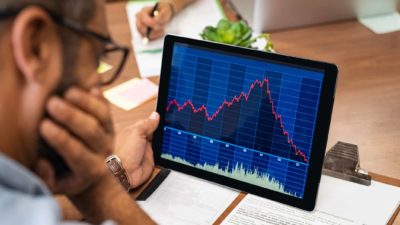The concept of 'value investing' has made a comeback recently. As the S&P/ASX 200 Index (ASX: XJO) plunged more than 35% last month, many bargain-hunting investors were seeing deals that the share market hadn't presented in years.
But this is no 'ordinary crash'. The coronavirus and resultant economic shutdown have change the game considerably.
Once-safe companies are now risky investments. 'Safe' ASX dividend shares have cancelled their dividends. Uncertainty abounds.
So how can you actually tell if an ASX share is a bargain buy or a value trap in this environment? Well, it's impossible to discern with total accuracy. But here are 2 things I like to look at in conjunction:
Earnings certainty
This is the tricky one. Earnings certainty refers to how likely a company will be able to consistently grow its earnings (or profits) into the future. Because we are going through a time of immense upheaval, I think you should focus on how a company will survive in 2020 and thrive into the future.
As a guide, you can always look at how a particular business fared through the GFC (if it's of a certain age), but you can also just use common sense. For instance, we all know that Woolworths Group Ltd (ASX: WOW)'s business is doing just fine right now. Qantas Airways Ltd (ASX: QAN)? Not so much.
Price-to-earnings (P/E) ratio
The P/E ratio is a great metric to use to determine if a share is cheap, but you have to use it in conjunction with the considerations I've just discussed. It's no good using a 2019 earnings metric that gives you a cheap P/E ratio if a company's 2020's earnings are going to collapse and never recover.
So the P/E ratio works by dividing a company's earnings per share by the company's share price. It essentially tells us how investors value each dollar of earnings from a company compared to other companies. Right now, the average P/E ratio for the ASX 200 is 14.69.
If a company that you've determined has sufficient earnings certainty trades at a comparatively low P/E ratio (to either the broader market or its own history), you might just have a bargain on your hands.
Foolish takeaway
Properly and accurately valuing a company takes a lot of time and research – well beyond just looking at a couple of investing metrics. In order to find gold in a riverbed, you first need a gold pan! And I think any investor can use the methods described above to sift out some companies that are worthy of a deeper dive.








